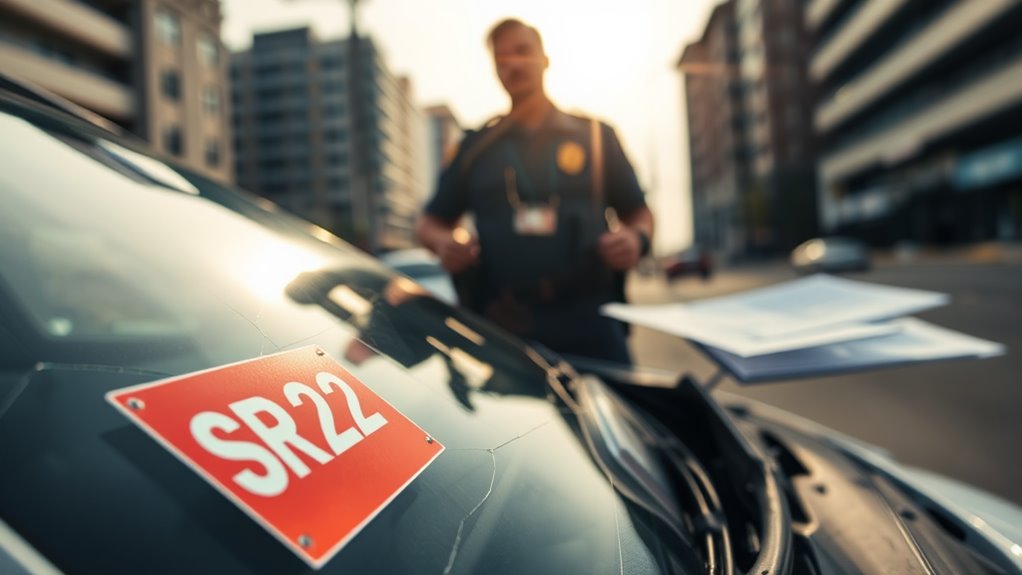If you're maneuvering through Ohio's SR22 insurance requirements, you need to understand the potential pitfalls. High-risk violations like DUIs can trigger mandatory SR22 coverage, which acts as proof of your financial responsibility. However, lapses in this coverage can lead to serious legal repercussions, including further license suspensions. The stakes are high, and the consequences can be severe. What happens if you miss a payment? The answers might surprise you.
If you've faced certain driving violations in Ohio, you might find yourself needing SR22 insurance to maintain your driving privileges. This form of insurance is a legal requirement for individuals who've been convicted of offenses such as DUIs, reckless driving, or accumulating multiple traffic violations within a short time frame. SR22 serves as proof of financial responsibility, guaranteeing that you meet Ohio's minimum liability coverage requirements. Specifically, this minimum coverage consists of at least $25,000 for bodily injury per person, $50,000 for total bodily injury per accident, and $25,000 for property damage. SR-22 insurance is designed to help ensure that high-risk drivers are financially responsible.
Facing driving violations in Ohio may require SR22 insurance, ensuring compliance with state liability coverage requirements.
When you're required to obtain SR22 insurance, your insurer will handle the filing process with the Ohio Bureau of Motor Vehicles (BMV). It's important to understand that maintaining continuous coverage is mandatory; any gaps in your insurance could lead to penalties, including potential extensions of your SR22 requirements or even additional license suspension. Consequently, it's vital to stay on top of your payments and guarantee that your policy remains active throughout the required period. Continuous coverage is essential to avoid penalties or license suspension.
The financial implications of carrying SR22 insurance can be significant. Drivers typically face higher premiums compared to standard insurance due to the perceived higher risk associated with their driving record. On average, the cost of SR22 insurance in Ohio is noticeably higher, and insurers may charge additional fees for filing and maintaining the SR22 form. These elevated premiums can persist throughout the SR22 period and even beyond, making it essential to evaluate affordability when selecting a provider.
It's also important to note that the duration for which you must carry SR22 insurance often spans three years, although this can vary based on the severity of your infractions. If you fail to maintain continuous coverage during this time, your insurer is obligated to notify the BMV, which could lead to a suspension of your driving privileges. To reinstate your license after a suspension, you'll need to provide proof of insurance along with your SR22 certificate, and you may also need to complete mandated programs, such as alcohol counseling.
For those who don't own a vehicle but still occasionally drive, non-owner SR22 policies are available. These policies guarantee compliance with state liability requirements while only offering secondary liability coverage when driving someone else's vehicle. However, keep in mind that these non-owner policies usually come with higher costs than standard options, reflecting the added risk.
Conclusion
In Ohio, maintaining SR22 insurance isn't just a legal requirement; it's your lifeline to driving freedom. Imagine planning a road trip, only to find out a simple lapse in coverage could bring it all crashing down. By keeping your payments timely and your policy active, you avoid the cycle of penalties and license suspensions. Stay vigilant and informed, because in the world of SR22, a moment's oversight can lead to a cascade of legal troubles.

